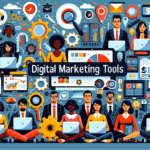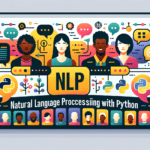The software industry has undergone a significant transformation in the last two decades, primarily due to the advent and rise of Software as a Service (SaaS). This shift has redefined how software is developed, delivered, and consumed, impacting businesses and consumers alike. In this blog, we will explore the key aspects of the SaaS revolution and its profound impact on the software delivery landscape.
What is Software as a Service (SaaS)?
Software as a Service (SaaS) is a software distribution model where applications are hosted by a third-party provider and made available to users over the internet. Unlike traditional software that requires installation and maintenance on individual computers, SaaS applications are accessible from any internet-connected device.
Key Features of SaaS
Accessibility and Convenience
SaaS applications offer unparalleled convenience by being accessible from anywhere, at any time. This accessibility is particularly advantageous for remote teams or businesses with multiple locations.
Cost-Effectiveness
With its subscription-based pricing model, SaaS reduces the need for significant upfront investments in software licenses, making it a cost-effective solution for businesses of all sizes.
Scalability
SaaS solutions are inherently scalable, allowing businesses to easily adjust their usage and features based on their evolving needs.
Automatic Updates
SaaS providers manage all updates and upgrades, ensuring that all users have access to the latest features and security enhancements without any additional effort.
Collaboration and Integration
Many SaaS platforms are built with collaboration in mind, offering tools that facilitate seamless teamwork. They also commonly feature integrations with other services, further enhancing productivity.
Impact of SaaS on the Software Industry
Shift in Software Development Focus
The rise of SaaS has led software developers to focus more on creating cloud-native applications that are optimized for performance, scalability, and security in a cloud environment.
Business Model Transformation
The traditional one-time purchase model of software has been largely supplanted by the recurring subscription model, changing how revenue is generated and recognized in the software industry.
Enhanced Customer Experience
SaaS offers a more user-friendly experience, with easy access, regular updates, and comprehensive support, leading to higher customer satisfaction.
Increased Competition and Innovation
The lower barriers to entry in the SaaS market have led to increased competition, driving innovation and providing more options for consumers.
Challenges and Considerations
While SaaS offers numerous benefits, it also presents challenges such as concerns over data security, reliance on internet connectivity, and the need for continuous subscription payments. Businesses must carefully assess their specific needs and the offerings of various SaaS providers to make informed decisions.
Conclusion
The SaaS revolution has reshaped the landscape of software delivery, offering a more flexible, cost-effective, and user-friendly model that benefits both providers and consumers. As technology continues to evolve, SaaS is poised to remain at the forefront of the software industry, driving further innovations and transformations.




